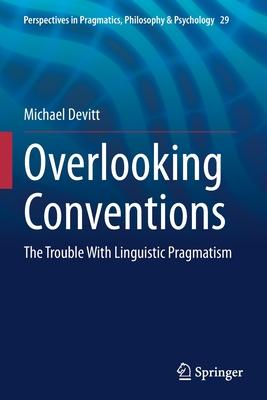PREFACE
CHAPTER 1: INTRODUCTION1.1 Background1.2 Summary of Chapters
CHAPTER 2: RELIANCE ON INTUITIONS: 2.1 The Received View2.2 The Task?2.3 Experimental Semantics 2.4 "Cartesianism"2.5 A Priori Knowledge?2.6 Embodied Theory?2.7 Competence as a Skill2.8 Intuitions as Empirical Judgments2.9 Rejecting "Voice of Competence"2.11 Conclusion
CHAPTER 3: THE SEMANTICS-PRAGMATICS DISTINCTION3.1 Introduction3.2 The Theoretical Motivation3.2.1 Human Thoughts3.2.2 Animal Communication3.2.3 Human Language3.2.4 Our Theoretical Interest in a Language3.3 Terminology3.4 Communication3.5 The Semantics-Pragmatics Dispute3.6 The Evidence3.7 Conclusion
CHAPTER 4: SPEAKER MEANINGS AND INTENTIONS4.1 Intending to Refer4.1.1 Objection 1: Implausible Starting Point4.1.2 Objection 2: Incomplete4.1.3 Objection 3: Redundant4.1.4 Objection 4: Misleading4.2 Intending to Communicate4.3. Constraints on Intentions
CHAPTER 5: LINGUISTIC CONVENTIONS AND LANGUAGEPART I: THE POSITION5.1 Conventions and Linguistic Meanings5.2 Linguistic ConventionsPART II: CONVENTION DENIERS5.3 Collins Against Conventions5.4 Chomsky Against Linguistic Conventions5.5 Chomsky against Common Languages5.6 Davidson, Malapropisms, Spoonerisms, and Slips
CHAPTER 6: BACH AND NEALE ON "WHAT IS SAID"PART I: BACH6.1 Bach’s Notion6.2 Criticisms of Bach6.3 Bach’s ResponsePART II: NEALE6.4 Neale’s Notion6.5 Criticisms of Neale
CHAPTER 7: CONFUSION OF THE METAPHYSICS OF MEANING WITH THE EPISTEMOLOGY OF INTERPRETATIONPART I: THE CONFUSION7.1 The Meaning/Interpretation Distinction7.2 Confusing Meaning and Interpretation7.3 Examples of the Confusion7.3.1 Jason Stanley and Zoltan Szabo7.3.2 Dan Sperber and Deidre Wilson7.3.3 François Recanati 7.3.4 Anne Bezuidenhout7.3.5 Robert Stainton7.3.6 Kepa Korta and John Perry 7.4 A Principled Position?PART II: DEFENDING THE CONFUSION7.5 Elugardo and Stainton’s Defense7.6 Tidying Up the Defense7.7 Two Major Failings of the Defense
CHAPTER 8: MODIFIED OCCAM’S RAZOR AND THE DENIAL OF LINGUISTIC MEANINGS8.1 Embracing the Razor8.2 The Falsity of the Razor (as Commonly Construed)8.3 The Explanatory Onus8.4 Objections to Semantic Polysemy8.4.1 The Failure of the tests8.4.2 Too Psychologically Demanding8.4.3 Distinguishing Polysemy From Homonymy8.4.4 Nunberg on the Arbitrariness of Meanings8.5 Bach on the Razor8.6 Bach’s "Standardization"
CHAPTER 9: REFERENTIAL DESCRIPTIONS: A CASE STUDY9.1 Introduction9.2 The Argument from Convention9.3 The Incompleteness Argument Against Pragmatic Explanations9.4 Bach’s Pragmatic Defense of Russell9.5 Bach’s Response9.6 Three Further Arguments for Semantic or against Pragmatic Explanations9.7 Neale’s Illusion9.8 Conclusion
CHAPTER 10: SATURATION AND PRAGMATISM’S CHALLENGE10.1 Introduction10.2 Truth-Conditional Pragmatics10.3 Meaning Eliminativism10.4 Implicit Saturation10.5 The Tyranny of Synt
| FindBook |
有 1 項符合
Overlooking Conventions: The Trouble with Linguistic Pragmatism的圖書 |
 |
Overlooking Conventions: The Trouble with Linguistic Pragmatism 作者:Devitt 出版社:Springer 出版日期:2022-10-09 語言:英文 規格:平裝 / 326頁 / 普通級/ 初版 |
| 圖書館借閱 |
| 國家圖書館 | 全國圖書書目資訊網 | 國立公共資訊圖書館 | 電子書服務平台 | MetaCat 跨館整合查詢 |
| 臺北市立圖書館 | 新北市立圖書館 | 基隆市公共圖書館 | 桃園市立圖書館 | 新竹縣公共圖書館 |
| 苗栗縣立圖書館 | 臺中市立圖書館 | 彰化縣公共圖書館 | 南投縣文化局 | 雲林縣公共圖書館 |
| 嘉義縣圖書館 | 臺南市立圖書館 | 高雄市立圖書館 | 屏東縣公共圖書館 | 宜蘭縣公共圖書館 |
| 花蓮縣文化局 | 臺東縣文化處 |
|
|
圖書介紹 - 資料來源:博客來 評分:
圖書名稱:Overlooking Conventions: The Trouble with Linguistic Pragmatism
內容簡介
作者簡介
Michael Devitt is a Distinguished Professor of Philosophy at the Graduate Center of CUNY. He is the author of the following books: Designation (1981); Realism and Truth (1984/1991/1997); Language and Reality (with Kim Sterelny, 1987/1999); Coming to Our Senses (1996); Ignorance of Language (2006); Putting Metaphysics First (2010); Biological Essentialism (forthcoming). He has co-edited (with Richard Hanley) The Blackwell Guide to the Philosophy of Language (2006)
|











